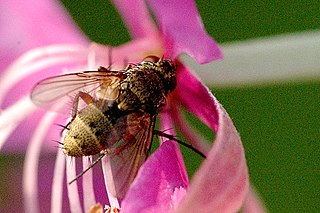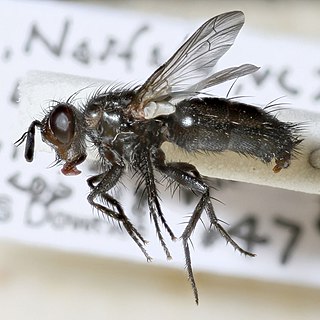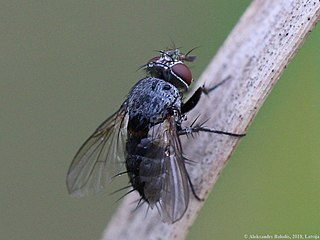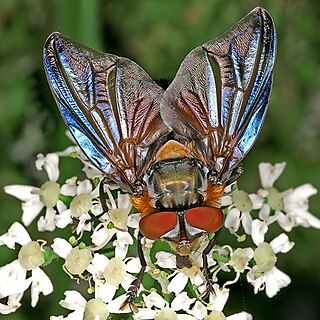
Ceranthia is a subgenus of flies in the family Tachinidae. Some consider this to be a subgenus of Siphona, most European workers seem content that this is a genus in its own right.

Ceromya is a genus of flies in the family Tachinidae.

Dexiosoma is a genus of flies in the family Tachinidae.
Austrophorocera is a genus of flies in the family Tachinidae.

Germaria is a genus of flies in the family Tachinidae.
Glaurocara is a genus of flies in the family Tachinidae.
Drino is a genus of flies in the family Tachinidae.

Peribaea is a genus of flies in the family Tachinidae.

Siphona is a genus of flies in the family Tachinidae.
Smidtia is a genus of flies in the family Tachinidae.
Thecocarcelia is a genus of flies in the family Tachinidae.

Linnaemya is a genus of flies in the family Tachinidae.

Actia is a genus of large flies in the family Tachinidae.

Dexia is a genus of flies in the family Tachinidae. Most larvae are parasitoids of beetles (Scarabaeidae).

Exoristinae is a subfamily of flies in the family Tachinidae. Most species are parasitoids of caterpillars.

Goniini is a tribe of parasitic flies in the family Tachinidae. Members of Goniini are distinguished from other Tachinidae by laying small "microtype" eggs that hatch only after being ingested by a host.

Phasiinae is a subfamily of flies in the family Tachinidae. Except for the small tribe Strongygastrini members of this subfamily attack only Heteroptera.

Ernestiini is a tribe of flies in the family Tachinidae.

Tachininae is a subfamily of flies in the family Tachinidae.

Aphantorhaphopsis is a subgenus of flies in the family Tachinidae. Some consider this to be a subgenus of Siphona, most European workers seem content that this is a genus in its own right. They are known from the Palearctic, Afrotropical and Oriental regions.













